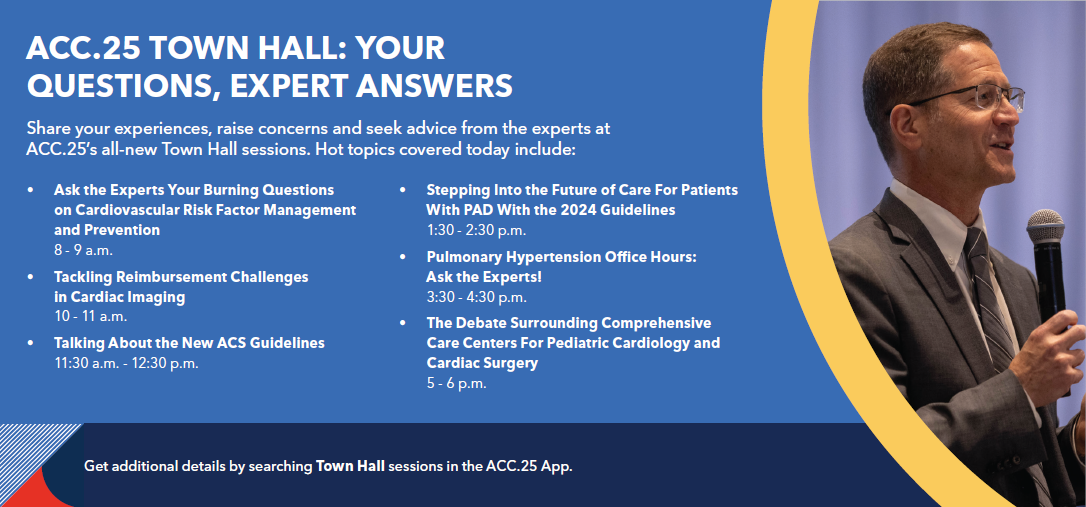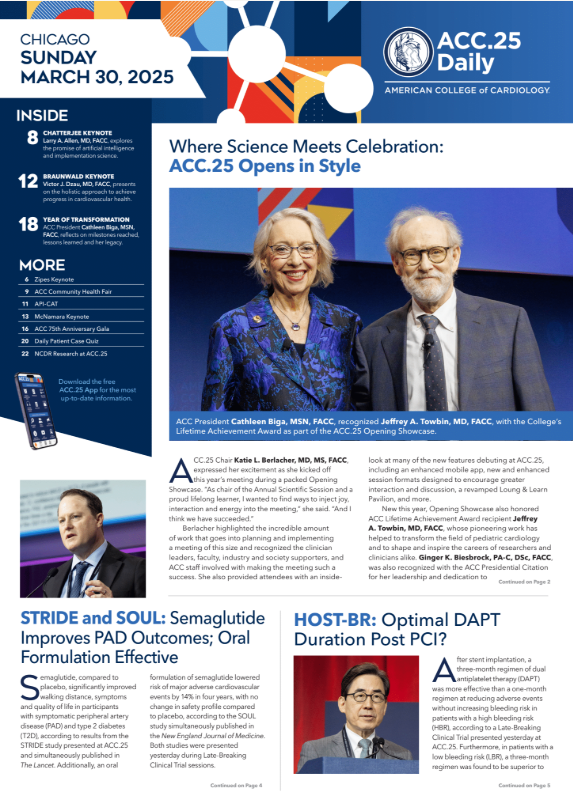A Brave New World: Achieving Meaningful Progress in Cardiology

When Victor J. Dzau, MD, FACC, takes the stage today to deliver the Eugene Braunwald Keynote, it will mark a profound full-circle moment in his remarkable career. Titled "Science, Medicine & Society: A Brave New World," his address promises to be both a tribute to the legacy of Eugene Braunwald, MD, MACC, and a clear-eyed examination of future challenges and opportunities in cardiovascular medicine.
Dzau, president of the National Academy of Medicine, is also chancellor emeritus and James B. Duke Professor of Medicine at Duke University, as well as former president and CEO of the Duke University Health System. He trained under Braunwald at Harvard, eventually becoming chief resident, and later succeeding Braunwald as chair of the Department of Medicine at Harvard Medical School's Brigham and Women's Hospital.
The two coauthored a seminal paper in 1990 describing the cardiovascular continuum, outlining how cardiovascular risk factors lead to vascular and cardiac injury and, eventually, to end-stage coronary artery disease and heart failure.
"Dr. Braunwald is central, pivotal to my entire life and career and I'm grateful to him forever," said Dzau, who emigrated from Hong Kong, China, to obtain his undergraduate and medical degrees in Canada before completing his residency and fellowship in the U.S. “He gave me an opportunity, he saw some promise in me, he mentored me, provided me with all the resources, and gave me tremendous guidance. Thus, giving this lecture means a huge amount to me.”
Dzau’s keynote takes inspiration from Aldous Huxley’s book of the same name and builds off a review Braunwald published in The New England Journal of Medicine with Elizabeth G. Nabel, MD, in 2012: “A Tale of Coronary Artery Disease and Myocardial Infarction.”
The paper detailed the history of coronary disease management between 1950 and 2009, highlighting the dramatic decline in the cardiovascular disease death rate due to scientific advances.
“Dr. Braunwald played a pivotal role in the evolution of cardiovascular sciences during this time,” Dzau says. “I asked myself: it's been 15 years of impressive scientific and technological advances in cardiovascular medicine; where are we today?” Given breakthrough medications such PCSK9 inhibitors, SGLT2 inhibitors, and GLP1-RAs, together with remarkable progress in devices, robotics, and transcatheter procedures and the promise of gene editing and artificial intelligence (AI), one would expect to see continued reductions in cardiovascular mortality rates.
But this brave new world of science and technology has not delivered the expected mortality reduction, he says. Instead, cardiovascular disease mortality rates, along with life expectancy, have plateaued. "Why are the technologies and innovations not delivering the health outcomes?" he posits.
The answers may lie in the increasing prevalence of noncommunicable diseases, especially obesity, along with a health system that emphasizes acute care over prevention. Also to blame are the health disparities resulting from social determinants of health such as socioeconomic disparities, limited access to healthy food and safe environments for physical activity, and structural barriers to health care access.
Recently, Dzau coined the term the “second valley of death.” Traditionally, the “valley of death” refers to the challenges involved in translating a major discovery from the lab to the clinical setting. As Dzau will highlight in his keynote and recently wrote in the Journal of the American Medical Association, this second valley of death, which he dubs the “health equity valley of death,” refers to challenges in “ensuring that all these significant innovations and technologies are accessible, affordable, equitable and ethical to everyone.”
"We don't have shortages in impressive technology and drugs,” he says. “We have a problem with getting it to people in the last mile – the equity issue.” Barriers to traversing this valley are rooted in socioeconomic, environmental, political and systemic factors, leading to the significant disparities in morbidity and mortality seen in the U.S. and around the globe.
Dzau’s keynote will also address the rapid evolution of AI, biotechnology and pharmaceutical innovation, which presents both transformative opportunities and significant individual and societal risks.
“While these technologies have the potential to revolutionize diagnostics, treatment and patient care, their responsible use is essential to prevent unintended consequences such as misuse of novel drugs and technologies, algorithmic bias in AI-driven health tools, ethical dilemmas in gene editing, or the misuse or abuse of AI, surveillance, synthetic biology, and dual use research,” he says.
“Given these challenges, achieving meaningful progress in cardiovascular health will require a holistic approach that integrates science, policy, ethics and health system reforms to close gaps in care and fully realize the potential of modern cardiovascular medicine.”
The 2025 Eugene Braunwald Keynote, “Science, Medicine and Society: A Brave New World,” will be presented today from 3:30-4:30 p.m. in room S100B.
Keywords: Cardiology Magazine, ACC Publications, ACC25, ACC Annual Scientific Session
